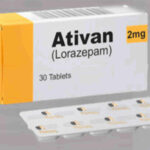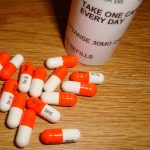Is 0.5 mg of Lorazepam a Low Dose?

Anxiety disorders are the most common mental illness in the U.S., affecting 40 million adults in the United States age 18 and older, or 18.1% of the population every year. Anxiety disorders are highly treatable, yet only 36.9% of those suffering receive treatment.
Experiencing occasional anxiety is a normal part of life. However, people with anxiety disorders frequently have intense, excessive, and persistent worry and fear about everyday situations. Often, anxiety disorders involve repeated episodes of sudden feelings of intense anxiety and fear or terror that reach a peak within minutes (panic attacks).
These feelings of anxiety and panic interfere with daily activities, are difficult to control, are out of proportion to the actual danger, and can last a long time. You may avoid places or situations to prevent these feelings. Symptoms may start during childhood or the teen years and continue into adulthood.
Anxiety disorders are treatable conditions and respond to front-line interventions and cognitive behavioral therapy. However, only about 60% of patients respond to those treatments to any significant degree. Many still have residual symptoms or stay treatment refractory. Doctors may prescribe medication alone or in combination with cognitive-behavioral therapy (CBT) or another kind of therapy.
What is Lorazepam?
Lorazepam, sold under the brand name Ativan among others, is a benzodiazepine medication. It is used to treat anxiety disorders. It is also used for short-term relief of the symptoms of anxiety or anxiety caused by depression. Lorazepam is a benzodiazepine that works in the brain to relieve symptoms of anxiety. Benzodiazepines are central nervous system (CNS) depressants, which are medicines that slow down the nervous system.
Lorazepam is also used to treat irritable bowel syndrome, epilepsy, insomnia, and nausea and vomiting from cancer treatment and to control agitation caused by alcohol withdrawal. Talk to your doctor about the possible risks of using this medication for your condition. This medication may be prescribed for other uses. Ask your doctor or pharmacist for more information.
How should Lorazepam be used?
Lorazepam comes as a tablet and concentrates (liquid) to take by mouth. It usually is taken two or three times a day and may be taken with or without food. Lorazepam tablets and liquid start to work in around 20 to 30 minutes. The full sedating effect lasts for around 6 to 8 hours. Follow the directions on your prescription label carefully, and ask your doctor or pharmacist to explain any part you do not understand. Take lorazepam exactly as directed.
Lorazepam concentrate (liquid) comes with a specially marked dropper for measuring the dose. Ask your pharmacist to show you how to use the dropper. Dilute the concentrate in 1 ounce (30 milliliters) or more of water, juice, or carbonated beverages just before taking it. It also may be mixed with applesauce or pudding just before taking the dose.
Is 0.5 mg of Lorazepam a Low Dose?
Yes, lower initial dose of 0.5-1 mg orally at bedtime, is usually recommended for elderly patients. The typical dose of lorazepam varies based on how well it works for you. Most people take between 2 mg and 6 mg by mouth per day, divided into 2 or 3 doses. Some people can take as little as 1 mg per day or as much as 10 mg per day. If your anxiety is worst around bedtime or if you also have insomnia (trouble sleeping), your nighttime dose may be larger than your daytime dose(s).
Lorazepam is also available as an IV injection that is administered by a healthcare provider. The dose of lorazepam depends on the disease being treated, and how the person responds to the treatment.
Signs and Symptoms of Lorazepam Overdose include disorientation, paradoxically increased anxiety or agitation, involuntary eye movements, and blurry vision.
Lorazepam side effects
Get emergency medical help if you have signs of an allergic reaction to lorazepam: hives; difficulty breathing; swelling of your face, lips, tongue, or throat.
Lorazepam can slow or stop your breathing, especially if you have recently used an opioid medication or alcohol. A person caring for you should seek emergency medical attention if you have slow breathing with long pauses, blue-colored lips, or if you are hard to wake up.
Call your doctor at once if you have:
• severe drowsiness;
• unusual changes in mood or behavior, being agitated or talkative;
• sudden restless feeling or excitement;
• thoughts of suicide or hurting yourself;
• confusion, aggression, hallucinations;
• sleep problems;
• vision changes; or
• dark urine, or jaundice (yellowing of the skin or eyes).
Drowsiness or dizziness may last longer in older adults. Use caution to avoid falling or accidental injury.
Common lorazepam side effects may include:
• dizziness, drowsiness;
• weakness; or
• feeling unsteady.
After you stop using lorazepam, get medical help right away if you have symptoms such as: unusual muscle movements, being more active or talkative, sudden and severe changes in mood or behavior, confusion, hallucinations, seizures, suicidal thoughts or actions.
Some withdrawal symptoms may last up to 12 months or longer after stopping this medicine suddenly. Tell your doctor if you have ongoing anxiety, depression, problems with memory or thinking, trouble sleeping, ringing in your ears, a burning or prickly feeling, or a crawling sensation under your skin.
This is not a complete list of side effects and others may occur. Call your doctor.





